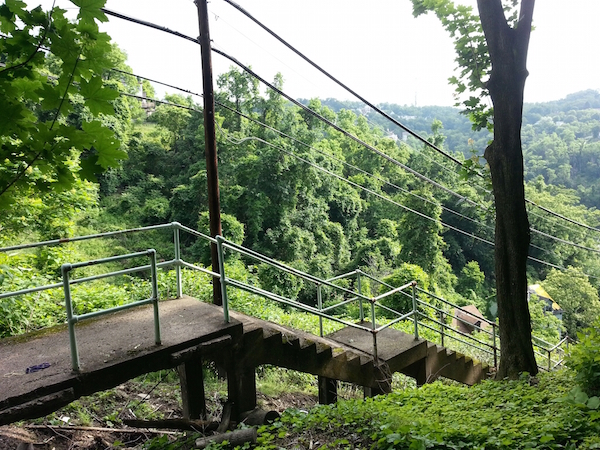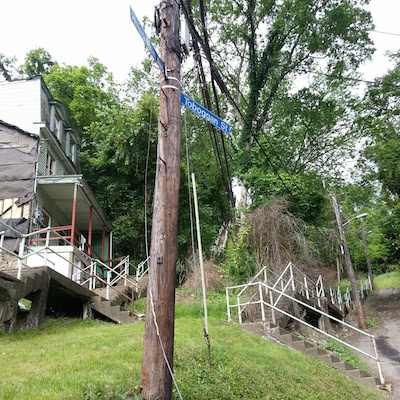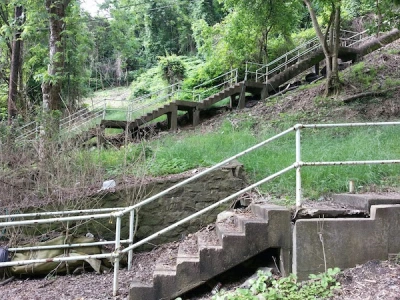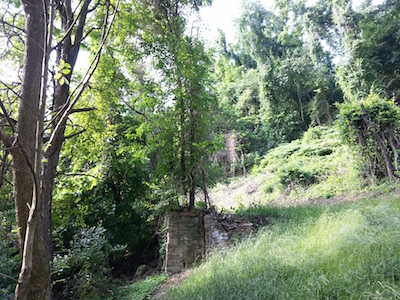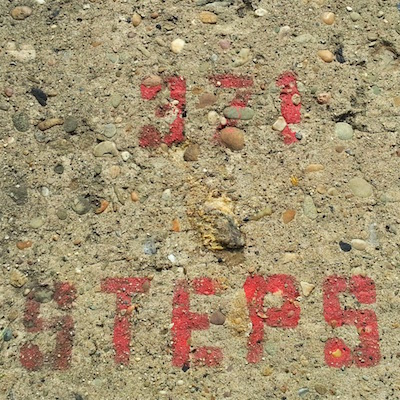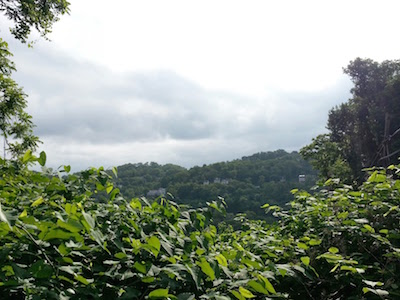The one and only time he met (then) Pittsburgh mayor Luke Ravenstahl, this future citizen-journalist knew it was a prime opportunity. “What are you doing to save the Rising Main Way steps?” was the sum total of my interrogation. (There was a rumor at the time that Rising Main was slated for demolition.) I got a non-committal response: “I thought those were getting fixed-up?”
Sure: public education and jobs and keeping crime down and paving the streets are all important things, but The Orbit will argue all day that the city steps (in general) and Rising Main Way (in particular) are a historical and cultural treasure that should be maintained and protected the way we preserve the Fort Pitt Blockhouse or Pitt’s little log cabin.
In the world of city steps, Rising Main Way is the big Kahuna, the alpha and the omega, the most colorful single crayon in the box. At 371 steps, Rising Main is not just the longest stretch of city steps in Pittsburgh, it is among the longest sets of community steps in the country. To put it in perspective, it’s something on the order of a fifteen to eighteen-story building, built straight up a steep hillside, and now totally surrounded by nature. And it’s less than two miles from the center of downtown Pittsburgh.
Getting there: There are a couple different ways to approach the Rising Main steps. Probably best for the first-timer is to drive/ride to the very end of Howard Street (off North Avenue, North Side), park/lock up anywhere and plan to just do an up-and-back. It will be plenty.
That said, there are a ton of terrific steps throughout Fineview and a lot of great things to see when you’re up there, so the more adventurous could plan one of many possible longer routes around. The Orbit will most certainly be back to describe some of these possible journeys.
One of the fascinating things about any step hike is the amateur archeological survey one inevitably ends up on. At one time there were dozens of properties that lined the hillsides of both Rising Main and the shorter Toboggan Street. Today maybe eight houses still stand, and only a few of these appear to be occupied.
Along the way up, you’ll see plenty of evidence of these former homes: if their sandstone foundations and crumbling walkways don’t give them away there are obvious breaks in the step railing that show where there was an entrance point from the steps to a property. Some of these inevitably become hobo camps or teen drinking hangouts. If you’re lucky, there’s evidence of witchcraft.
That houses were only accessible by the steps is certainly not unusual–you still see many of these around. But the thought of being half-way up or down this particular incline, needing to haul your groceries the equivalent of, say, eight or ten stories to your front door, is pretty amazing. It’s romantic to think of the houses built in this environment, but the reality would certainly be challenging. It’s no surprise that few of these homes remain.
The original purpose of the steps was of course a means of commuter travel from the many high hills (where people lived) to the valleys and flats along the river (where they worked, shopped, prayed, and played). Some of the steps still serve this purpose, but Rising Main certainly does not. Plenty of people live in the Fineview neighborhood (at the top of the hill), but there’s really nothing to walk down to anymore.
The project that built I-279 in the mid-1970s ran right through the industrial and commercial heart of the valley that separates Spring Hill and Reserve Township (on the east) from Fineview and Observatory Hill (on the west). The constant drone of rushing traffic never lets you forget it. The full run of houses that used to line Howard Street (at the base of the hill) have been long demolished (though again, many foundations remain), so there aren’t even any people to visit. [But The Orbit will put in a pitch to visit Pittsburgh’s finest piece of public art while you’re there.]
I’ve dragged a lot of out-of-town guests up the steps–and some of them don’t let me forget it! But if I were visiting Pittsburgh for the first time, I’d take a step hike over a trip to the museum, or a ball game, or whatever it is that most people do when they travel. Take The Orbit‘s advice: corral your guests and get their whining-ass kiesters up the steps–they’ll thank you for it later.
